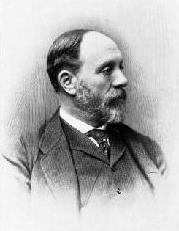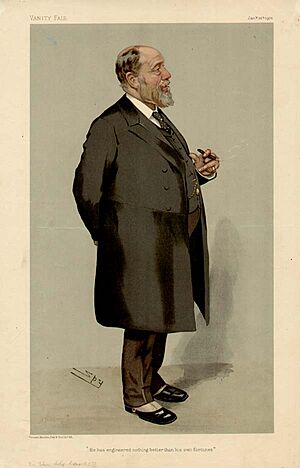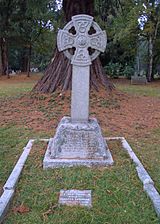John Wolfe Barry facts for kids
Quick facts for kids
John Wolfe Barry
|
|
|---|---|
 |
|
| Born | 7 December 1836 London
|
| Died | 22 January 1918 (aged 81) Delahaye House, Chelsea, London
|
| Nationality | English |
| Education | Glenalmond College King's College, London |
| Occupation | Engineer |
| Parent(s) | Charles Barry |
| Engineering career | |
| Discipline | Civil |
| Institutions | Institution of Civil Engineers (president) |
| Projects | Tower Bridge, Blackfriars Railway Bridge |
| Significant design | Cannon Street Railway Bridge, Kew Bridge, District line |
Sir John Wolfe Barry KCB FRS (born December 7, 1836 – died January 22, 1918) was a brilliant English engineer. He was the youngest son of the famous architect Sir Charles Barry. John Wolfe Barry is most famous for designing and building the amazing Tower Bridge over the River Thames in London. This huge project took place between 1886 and 1894. After he was made a knight in 1897, he added "Wolfe" to his name in 1898. This is how he became known as Sir John Wolfe Barry.
Contents
Becoming an Engineer
John Wolfe Barry went to school at Glenalmond College and King's College, London. He learned engineering from Sir John Hawkshaw, another famous civil engineer. John Wolfe Barry also worked with Henry Marc Brunel, who was the son of the legendary engineer Isambard Kingdom Brunel. Barry and Hawkshaw worked on many railway bridges over the River Thames. In 1867, Barry started his own engineering company. He continued to work on many railway projects. Later, in 1878, he teamed up with Henry Marc Brunel.
Building Tower Bridge
The Tower Bridge project made John Wolfe Barry very famous. In 1878, an architect named Horace Jones first suggested building a bascule bridge. This type of bridge opens in the middle to let ships pass. In 1885, a special law was passed to allow the City of London to build it.
Horace Jones was chosen as the architect and developed the first plans. He was made a knight in 1886. Because John Wolfe Barry had a lot of experience with bridges over the Thames, he was brought in as the engineer. He and Henry Marc Brunel redesigned parts of the bridge, especially the moving sections. Sir Horace Jones died soon after construction began. This meant Wolfe Barry and Brunel were in charge of finishing the huge project. The bridge was completed in 1894.
Other Important Projects
John Wolfe Barry worked on many other important structures. Some of his projects included:
- Cannon Street Railway Bridge (1866)
- Blackfriars Railway Bridge (1886)
In 1891, he started a new partnership with his nephew, Arthur John Barry. Together, they worked on:
- The District line of the London Underground (with Sir John Hawkshaw)
- Pumping stations on the Regent's Canal in London
- Kew Bridge in west London (1903)
- Expanding the Greenland Dock in south-east London (1904)
- The Immingham Dock (1912)
Setting Industry Standards
John Wolfe Barry was a leader in the engineering world. He was elected President of the Institution of Civil Engineers in 1896. He also helped create important rules for the industry. He pushed for a committee to set standards for things like iron and steel.
This committee started in 1901 with members from several engineering groups. Later, the Institution of Electrical Engineers joined too. These groups became the founders of what is now the British Standards Institution (BSI). The BSI creates standards for many products and services we use every day.
Later Life and Achievements
In 1895, John Wolfe Barry was elected a Fellow of the Royal Society (FRS). This is a very high honor for scientists and engineers. He was also made a Knight Commander of the Order of the Bath (KCB) in 1897. He became President of the Institution of Civil Engineers in 1898.
He was the chairman of a company called Cable and Wireless from 1900 to 1917. This company helped connect the world with telegraph cables.
Personal Life
John Wolfe Barry married Rosalind Grace. They had four sons and three daughters. In 1922, a special window was placed in Westminster Abbey to remember him.
He added the name "Wolfe" to his name because he received money from his godfather, John Lewis Wolfe.
John Wolfe Barry passed away in January 1918. He was buried in Brookwood Cemetery in Surrey.
|



